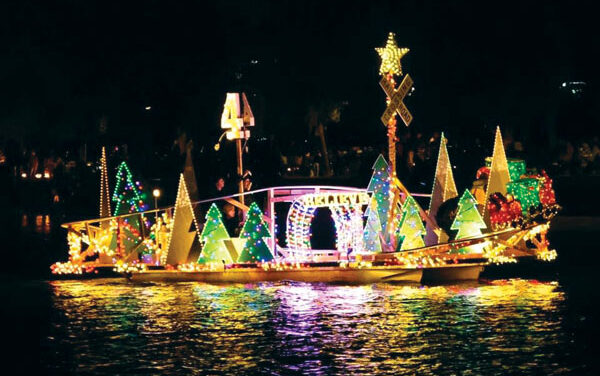NATION – According to a recent survey, one in 12 U.S. homeowners surveyed do not have outdoor lighting for their house. As the days get shorter here in the northern hemisphere, adding or upgrading outdoor lighting can help homeowners live their best outdoor life 24/7/365 with perfect visibility and comfort.
However, outdoor lighting also presents a few hazards, some of which could utterly ruin your al fresco free time. To keep things safe and beautiful, here are five simple tips you can follow this fall.
1. Leverage your lighting for security and visibility
Well-planned outdoor lighting accomplishes two things. First, it safely and comfortably extends your usable living space. Second, it deters intruders from prowling your property. To pull off this double duty, pay special attention to ensuring all pathways, social spaces and entrances are illuminated.
Also, instead of motion-activated lighting, consider an always-on approach. This can be a better deterrent before a ne’er-do-well enters your yard. And thanks to LED bulbs, leaving a few outdoor lights on doesn’t have to cost a lot or create a lot of heat.
2. Ensure everything is outdoor-rated
Only use bulbs, fixtures, cords and outlets specifically rated for outdoor use. Fortunately, with the near-infinite range of outdoor lighting styles on the market, you’ll never have to sacrifice on aesthetics. Choosing correctly rated equipment lets you enhance the appeal of your property, highlighting architectural features and landscaping focal points, without risking failure, fire or other calamities.
3. Only use GFCI outlets
GFCI or GFI stands for ground fault circuit interrupter outlet. These outlets will shut off power almost instantly if any plugged-in devices contact water. GFCI outlets have only been required in homes since 1971, according to the National Fire Protection Association. So, if your home was built before then, calling in an electrician is a wise decision. Mr. Electric, a Neighborly company, is a great place to find a locally owned, independent and certified expert.
4. Avoid risky placement
Unless specifically designed for it, outdoor lights shouldn’t be directly on grass. Prone to being either wet or tinder dry, adding electricity to grass just isn’t a smart move. Also, if your wiring will be buried, make sure it isn’t under anything highly flammable, such as mulch or woodchips. An experienced electrician can help you find safe and attractive solutions, such as installing directly on concrete or in gravel beds.
5. Respect the maximum wattage
Screwing a 100-watt bulb into a fixture with a 75-watt maximum will, at best, waste your money on bulb replacements. You’re also likely to cause permanent damage to the fixture itself. To steer clear of these issues, always choose a bulb where the wattage is equal to or less than the fixture’s maximum.
This doesn’t mean you have to sacrifice brightness. With LED bulbs, you can get the same or greater illumination as incandescent bulbs with just a fraction of the wattage.
When in doubt, call a professional. With the combination of their experience and your vision for easy outdoor living, the future can’t help but look bright.
– BPT
Lake Havasu Annual Holiday Boat Parade of Lights returns for 2024
LAKE HAVASU — Lake Havasu City, Arizona, will once again come alive with holiday spirit on...
Read More























